Math and science::INF ML AI
Belief networks: independence examples
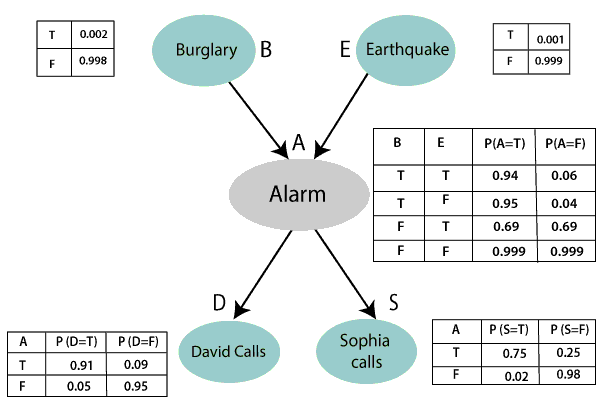
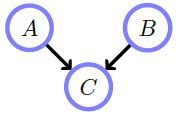
1 a) Marginalizing over \( C \) makes \( A \) and \( B \) independent. In other words, \( A \) and \( B \) are (unconditionally) independent \( p(A,B) = p(A)p(B) \). In the absence of any information about the effect of \( C \) we retain this belief.
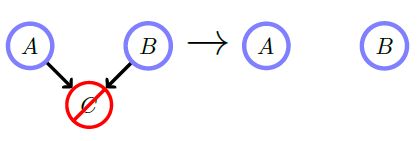
1 b) Conditioning on \( C \) makes A and B (graphically) dependent \( p(A, B \vert C) \ne p(A \vert C)p(B \vert C) \). Although the causes are a priori independent, knowing the effect \( C \) can tell us something about how the causes colluded to bring about the effect observed.
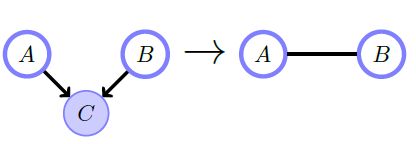
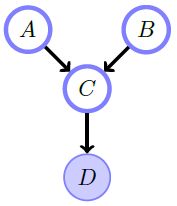
2. Conditioning on \( D \), a descendent of a collider \( C \) makes \( A \) and \( B \) (graphically) dependent. \( p(A, B \vert D) \ne p(A \vert D)p(B \vert D) \)
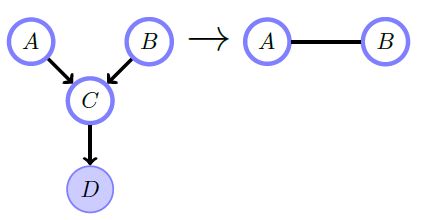
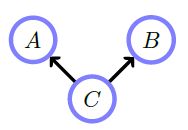
3 a) \( p(A, B, C) = \) \(p(A \vert C)p(B \vert C)p(C) \). Here there is a 'cause' \( C \) and independent 'effects' \( A \) and \( B \).
3 b) Marginalizing over \( C \) makes \( A \) and \( B \) (graphically) dependent. \( p(A, B) \ne p(A)p(B) \). Although we don't know the 'cause', the 'effects' will nevertheless be dependent.

3 c) Conditioning on \( C \) makes \( A \) and \( B \) independent. \( p(A, B \vert C) = p(A \vert C)p(B \vert C) \). If you know the 'cause' \( C \), you know everything about how each effect occurs, independent of the other effect. This is also true for reversing the arrow from \( A \) to \( C \)—in this case, \( A \) would 'cause' \( C \) and then \( C \) would 'cause' \( B \). Conditioning on \( C \) blocks the ability of \( A \) to influence \( B \).

Finally, these following graphs all express the same conditional independence assumptions.

Source
Bayesian Reasoning and Machine LearningDavid Barber
p42-43
